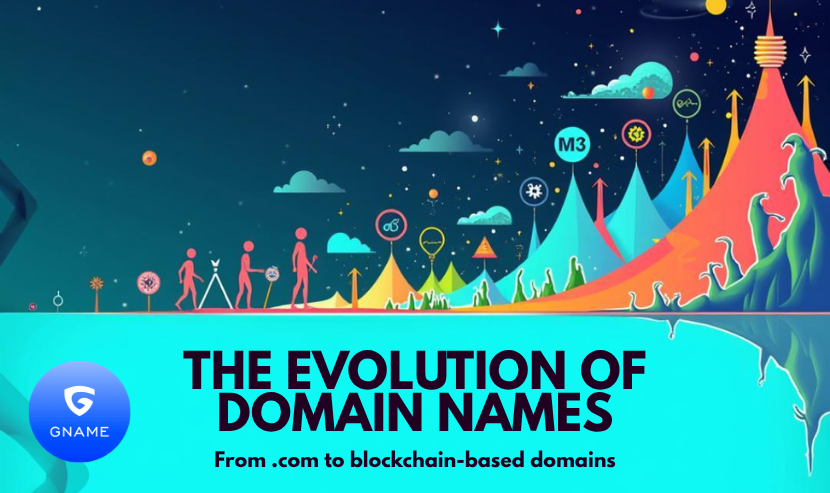From the early days of the internet to the decentralized visions of Web3, the domain name system has evolved in tandem with technological progress and shifts in digital behavior. What began as a simple solution to replace hard-to-remember IP addresses has now become a critical asset for branding, identity, and trust in the digital world. This article traces the journey of domain names—from the .com boom to the emergence of blockchain-based domains—and explores where this evolution might lead us next.

The Genesis: When the Internet Got Its Names
Before domain names existed, the internet was navigated through numerical IP addresses—long strings of numbers that were difficult to remember or associate with a brand. In 1985, this changed with the registration of the world’s first domain name: symbolics.com. It marked the dawn of a human-friendly internet, where words replaced numbers and access became intuitive.
To support this new system, the Domain Name System (DNS) was introduced. Alongside it came the first top-level domains (TLDs) like .com, .org, and .net. Among them, .com quickly emerged as the flagship of commercial activity online—setting the stage for one of the most frenzied periods in tech history.
The Dot-Com Boom: Digital Real Estate Meets Gold Rush
In the late 1990s, the internet economy exploded. Entrepreneurs, investors, and dreamers scrambled to stake their claim in the digital frontier. Domain names—especially those ending in .com—became coveted assets. Owning a catchy .com wasn’t just a branding choice; it was a ticket to visibility, investor attention, and, potentially, massive profit.
Companies like Amazon, eBay, and Google rose to prominence during this era, showing the power of a well-positioned domain. But the bubble burst in the early 2000s, leaving behind a trail of failed startups and overpriced domains. Still, the .com extension survived as the gold standard—resilient, prestigious, and universally recognized.
The Rise of New TLDs: From Scarcity to Creative Freedom
As the internet matured, the demand for meaningful domain names outpaced the availability of good .com options. To meet this challenge, ICANN (Internet Corporation for Assigned Names and Numbers) launched a dramatic expansion of the DNS in 2013, releasing hundreds of new TLDs such as .tech, .design, .shop, and .studio.
These modern TLDs shifted the focus from scarcity to brand expression. Startups and creators could now choose domain names that aligned closely with their industry, niche, or personality. A photographer could build a brand on jasmine.photo, while a blockchain project might opt for nextgen.xyz. This era turned the domain name into a storytelling tool—compact, expressive, and strategic.
The Web3 Era: Ownership, Identity, and Decentralization
Today, as we enter the Web3 era, domain names are evolving once again—this time through decentralized blockchain technology. Services like the Ethereum Name Service (ENS) and Unstoppable Domains allow users to register blockchain-native names like yourname.eth or project.crypto that double as digital identities.
These domains are self-owned, censorship-resistant, and interoperable with blockchain applications (dApps). They enable peer-to-peer payments, serve as wallet addresses, and provide a unified identity across decentralized networks. Unlike traditional domains, they’re not leased from a registrar—they’re assets owned by the user.
This marks a paradigm shift. Domains are no longer just entry points to websites; they’re programmable assets, tokens of identity, and keys to next-gen digital ecosystems.
Conclusion: The Domain Name as Digital DNA
The history of domain names is a story of evolution—from numeric IPs to iconic .coms, from niche TLDs to Web3 identity anchors. What began as a technical workaround has become the digital DNA of brands, businesses, and individuals alike.
As the digital world becomes more decentralized, interconnected, and user-owned, domain names will play a deeper role in authentication, identity, and trust. In this next chapter, choosing the right domain won’t just be about SEO or memorability—it will be about signaling values, enabling access, and building permanence in an ever-changing web.
The future of domains isn’t just about naming websites. It’s about naming who we are in the digital world. And that future has only just begun.























